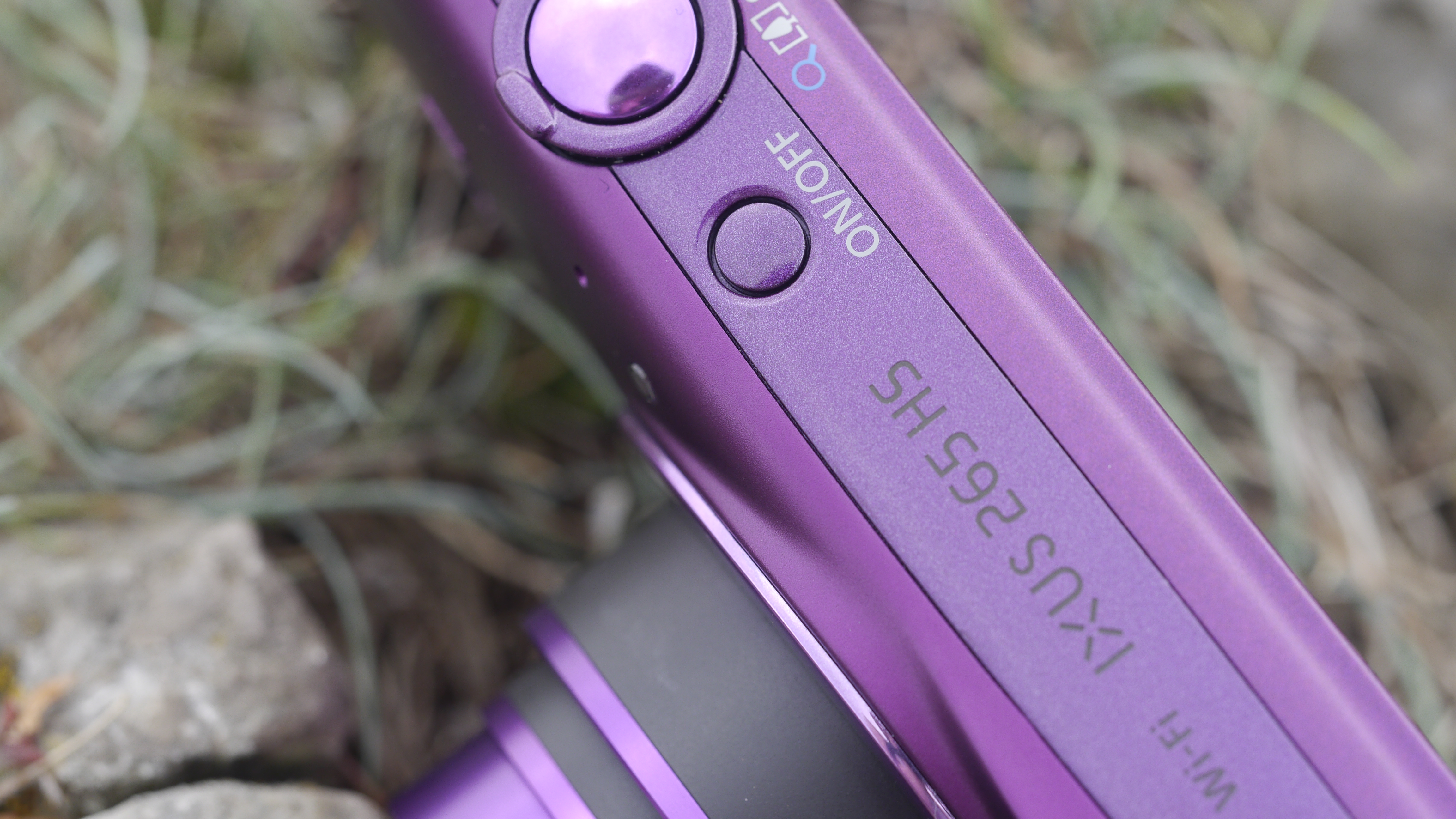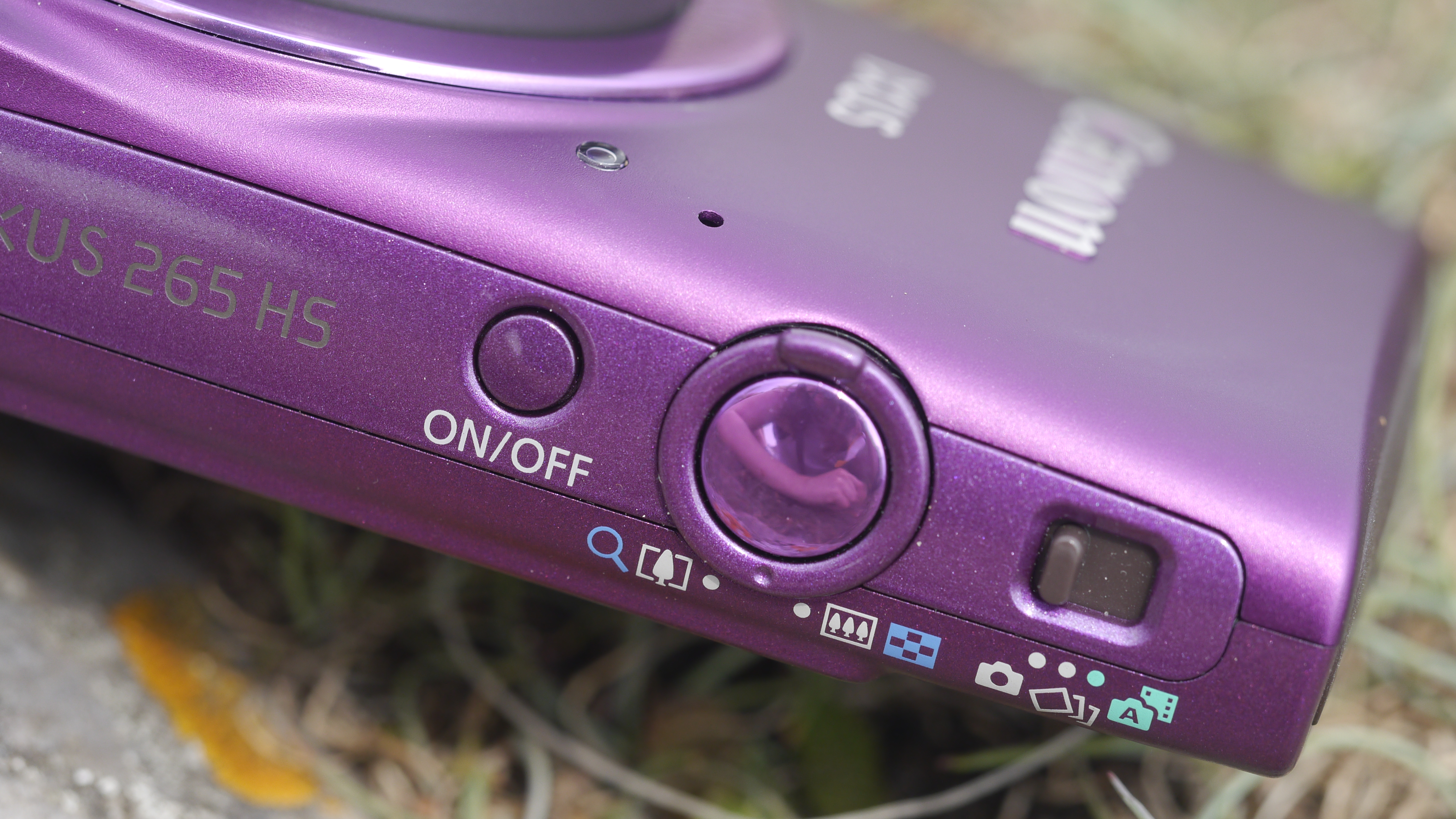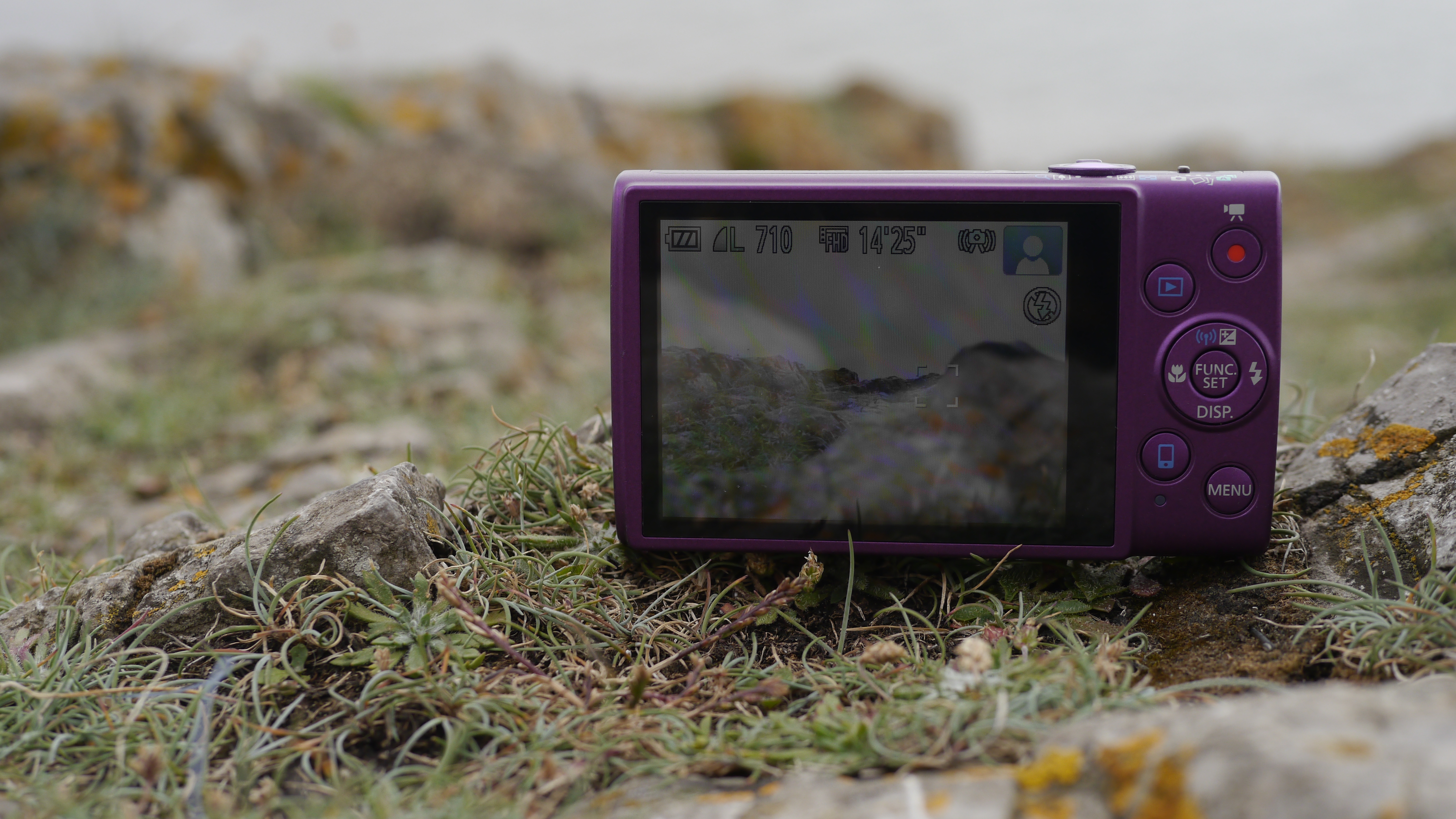Why you can trust TechRadar
As I generally find with IXUS cameras, the IXUS 265 has a very sleek chassis which has a very pleasing outward appearance. It's impressively small considering it has a 12x optical zoom too – you won't struggle to fit this camera in your jeans pocket, making it ideal for carrying with you all the time.
Build quality and handling

On top of the camera is the on/off button, shutter release and a switch for moving between the three different exposure modes the camera offers – automatic, creative shot and the fun Hybrid Auto mode. It's nice to be able to quickly toggle between the fully automatic and in particular creative mode – great if you're using the creative mode but quickly want to capture a "normal" shot.
Once the automatic selection has been chosen, you can choose a few different modes, accessed by pressing the function button on the back of the camera. There's fully automatic, which sees the camera take complete control of the camera, Program mode, Portrait, Smart Shutter (the camera will take a shot when it detects a face), High-speed Burst, Handheld NightScene, Low Light and a few digital filters, including Toy Camera and Fish-Eye Effect.

If you choose to shoot in Program Mode then you'll be able to make changes to various settings including sensitivity (ISO), white balance, metering and the different colour settings the camera offers. There's no way to control aperture or shutter speed though – but then again this camera isn't aimed at those looking for that level of control in a compact.
There's a decent number of buttons on the back of the camera, including a standard four-way navigational pad, with each directional key controlling a specific function. The left controls macro focusing, up controls exposure compensation, right controls the flash mode, while the down key changes the display mode.

A dedicated button is found on the back for accessing the Wi-Fi settings the camera offers. From here you can connect the camera to your phone for quickly transferring images and video across, or remotely controlling the camera. You can't upload directly to sites such as Facebook from the camera itself.

Pressing a function button in the centre of the four-way navigational pad lets you access the most commonly used settings. There will be more settings displayed on the menu if you are shooting in Program Auto mode than using fully automatic or scene modes. While in Program mode, from here you can access settings such as white balance, metering and sensitivity (ISO).
Sign up for breaking news, reviews, opinion, top tech deals, and more.
It's likely to be pretty rare that you'll need to dive into the full menu, but if you do, you'll find it fairly well organised into two separate tabs – one for image quality type settings, and another for general settings such as date and time.

Amy has been writing about cameras, photography and associated tech since 2009. Amy was once part of the photography testing team for Future Publishing working across TechRadar, Digital Camera, PhotoPlus, N Photo and Photography Week. For her photography, she has won awards and has been exhibited. She often partakes in unusual projects - including one intense year where she used a different camera every single day. Amy is currently the Features Editor at Amateur Photographer magazine, and in her increasingly little spare time works across a number of high-profile publications including Wired, Stuff, Digital Camera World, Expert Reviews, and just a little off-tangent, PetsRadar.
